OG TALK, the early story of Ethereum and its future development.
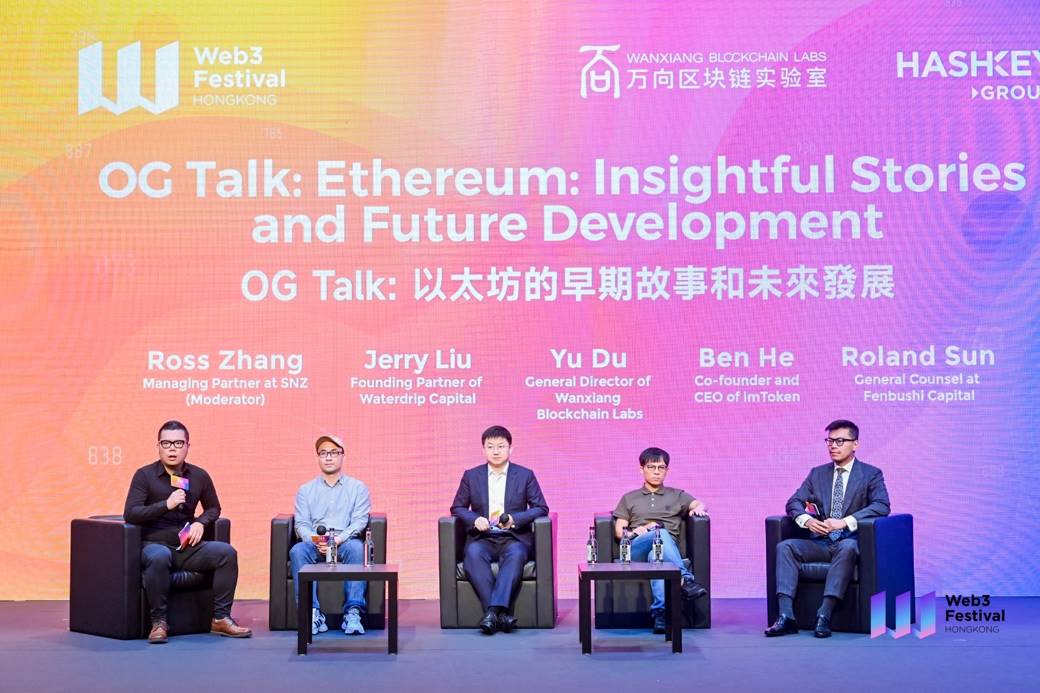
At the 2023 Hong Kong Web3 Carnival, participants and supporters from the early Ethereum community in China, including Distributed Capital, Wanxiang Blockchain, SNZ, imToken, and Crab, discussed the "Chinese story" of Ethereum's founding. They also shared their suggestions for Ethereum's future development, such as modularity, user experience, storage, and the Asian developer community.
Host:
- Ross Zhang (Managing Partner of SNZ)
Roundtable Guests:
Jerry Liu (Co-founder of Waterdrop Capital)
Du Yu (Head of Wanxiang Blockchain Lab)
Ben He (Founder and CEO of imToken)
Roland Sun (General Counsel of Distributed Capital)
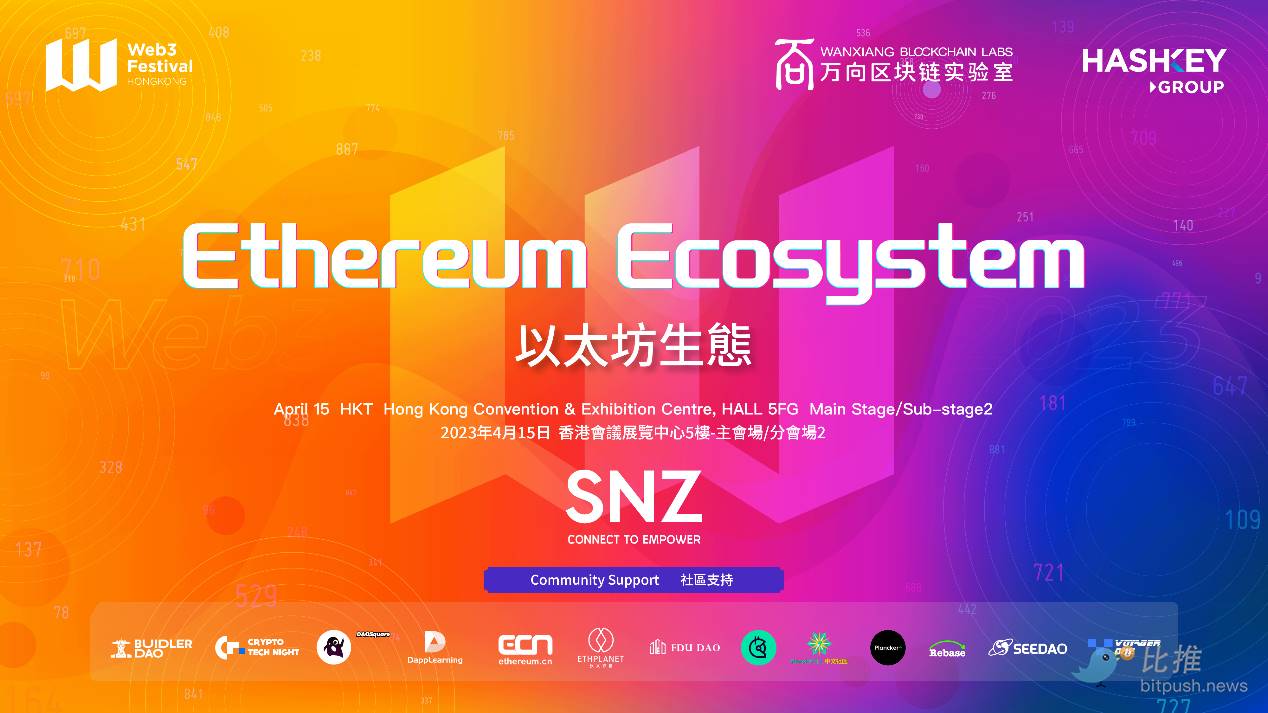
Ross Zhang: Thank you all for coming to today's Ethereum session. I know there have been many activities around recently. Today, we invite some of the earliest OGs of Ethereum to share some interesting stories from Ethereum's early days, allowing everyone to understand its development.
Let me introduce myself. I am Ross, the Managing Partner of SNZ. SNZ was one of the earliest investors and supporters of Ethereum back in 2014 and 2015, hosting many early community events. As a VC Fund, we have always supported the development of the Ethereum ecosystem, and we were also early investors and supporters of Arbitrum. Now, I would like to invite our guests to introduce themselves.
Jerry Liu: Hello everyone! I am Jerry, but in the community, people are more accustomed to calling me "Crab." I am the founding partner of Waterdrop Capital and have participated in some crypto projects quite early on.
Du Yu: Hello everyone! I am Du Yu from Wanxiang Blockchain Lab, and I am also the organizer of this event. Thank you all for coming here on a Saturday morning after a long week to participate in our event.
Wanxiang Blockchain Lab is one of the earliest supporters of Ethereum in Asia and China. We started researching blockchain in 2014 and officially established the blockchain lab in 2015 to promote the development of the blockchain and Web3 industry in Asia. We are also one of the earliest supporters of the Ethereum ecosystem.
Ben He: Hello everyone! I am Ben, the founder of imToken. I personally dived into the blockchain ecosystem in 2014 after seeing the Ethereum white paper, and I was quite lucky.
In 2015, I participated in a hackathon organized by Wanxiang Lab at the Deloitte building in Shanghai, which led to the birth of the imToken wallet. From the beginning, imToken was rooted in the Ethereum ecosystem and was the first mobile-friendly wallet for Ethereum in Asia. Now, after seven years of development, we have around 15 million users and a distributed team.
As you can see, today we are discussing Web3, which originated from Ethereum. Gavin Wood, the author of the Ethereum white paper, wrote relevant research articles about Web3 very early on. I am very happy to be here to share and communicate with everyone about the history of Ethereum's development and its future direction.
Roland Sun: Hello everyone! I am Roland, the General Counsel of Distributed Capital. Distributed Capital was founded in 2015 by Vitalik, Wanxiang's Xiao Feng, and Shen Bo. It is one of the earliest blockchain investment institutions in the Asia-Pacific region and one of the earliest investment institutions in Ethereum. Over the years, we have witnessed the history of Ethereum's development, and I am glad to have the opportunity to share our experiences with you. Thank you!
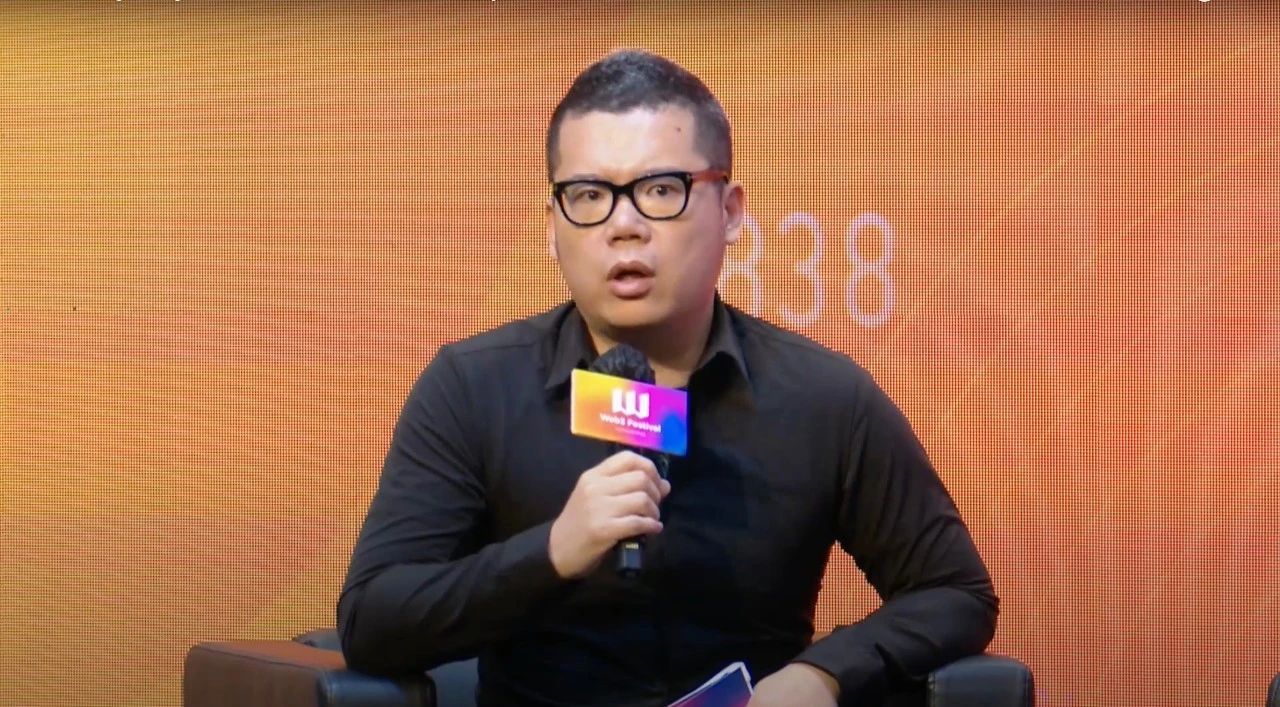
Ross Zhang: Thank you all for your introductions. This roundtable is essentially a gathering of early friends of Ethereum. Many interesting things happened in the early days of Ethereum. First, I would like to invite Crab to introduce some stories. Why him first? Because Crab participated in translating the Ethereum white paper, and the Chinese name for Ethereum was also his creative idea.
Jerry Liu: Let's go back to the first half of 2015. At that time, blockchain was still in its very early stages, and there were very few people paying attention to this field. However, there were some friends in Shanghai who often discussed and organized gatherings to talk about this topic, and they would frequently write articles on early media platforms like 8btc.
At that time, there were very few projects in the community. I remember that the exchanges mainly had Bitcoin, Litecoin, BTS, and other projects. I was deeply involved in the BitShares project, and Shen Bo was also very interested in it.
One day in February 2015, Shen Bo approached me and asked if I could translate the Ethereum white paper. He thought my writing was decent since I often published articles on 8btc, so he asked me to do this.
At that time, Roland and I had an organization called "Bit Startup Camp," which included members like Da Hongfei and the founder of SNZ, Guru. So, I reached out to Guru, and we worked together to translate the white paper.
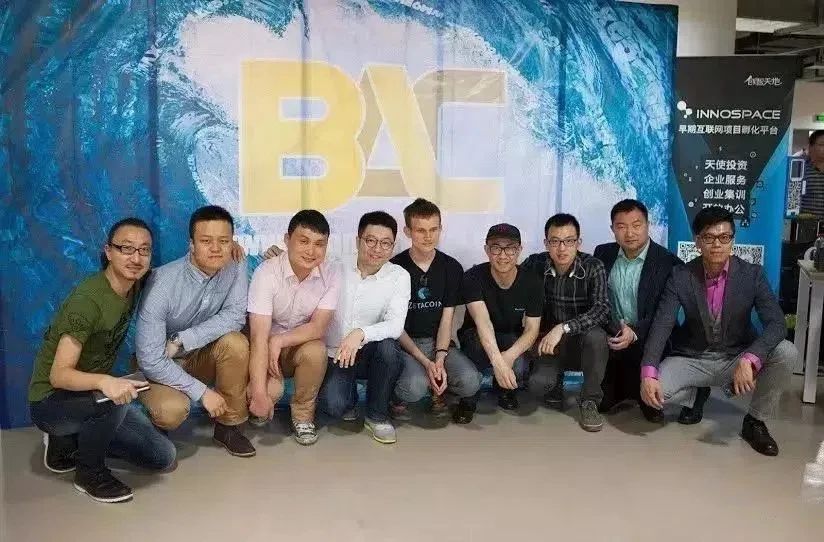
A group photo of active members of Bit Startup Camp with Vitalik
The Chinese name for Ethereum is also a topic that everyone enjoys discussing. At that time, we didn't think too much about it. Why did we translate it into this name? Because "ETHER" can be translated as "以太" without any issues, but what about "EUM"? The root meaning is related to a factory. I thought Vitalik named it Ethereum to signify a smart contract factory that could do many customized things.
I thought we couldn't just translate it as "以太工厂" (Ether Factory), so what character should we use? The character "坊" in Chinese means factory or workshop, which should align well with the original meaning of Ethereum. So, we finally settled on the name "以太坊" (Ethereum), which is the basic story from the beginning.
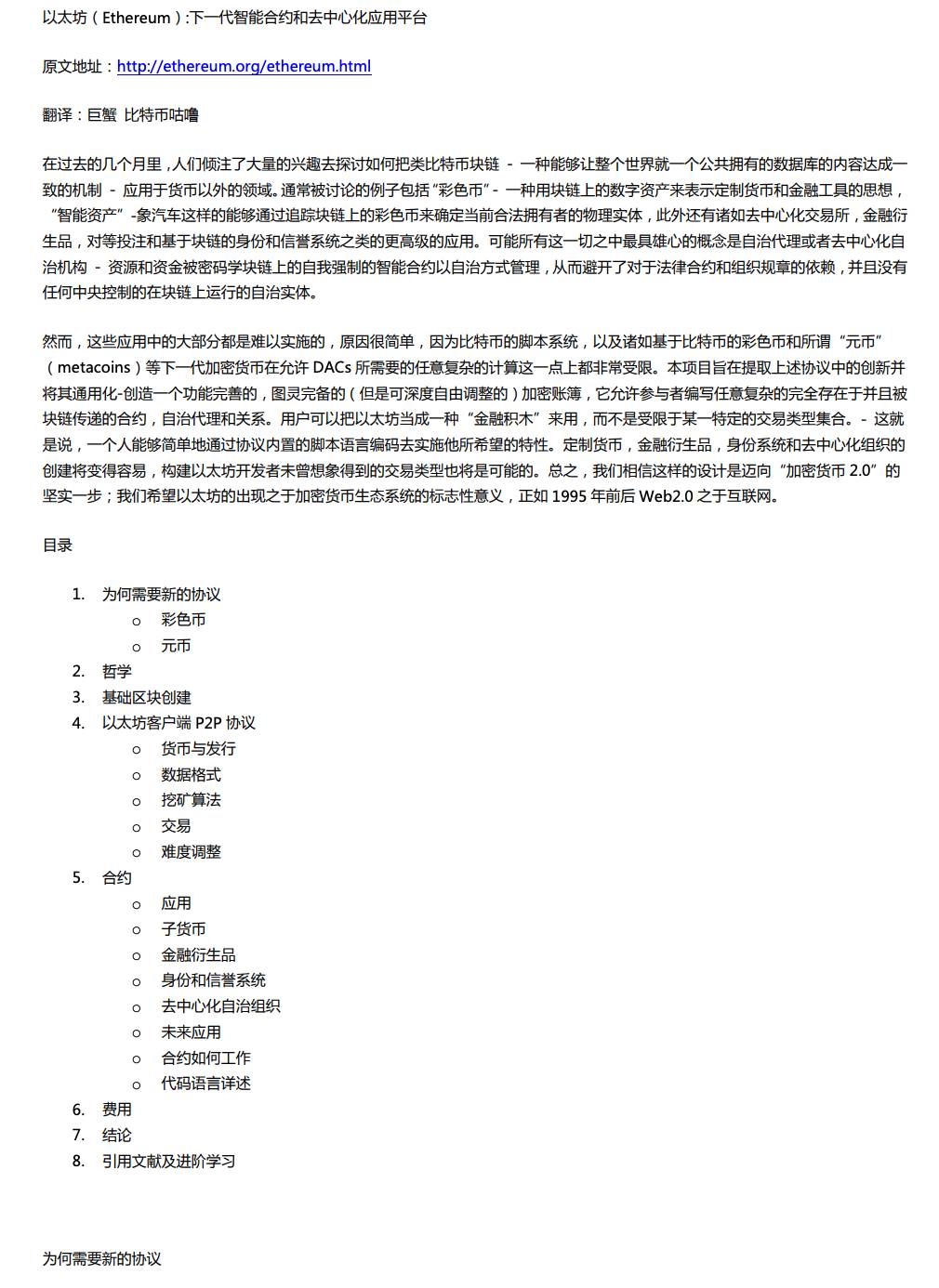
At that time, when the Ethereum project was just emerging, not many people were paying attention. There was another member in the Bit Startup Camp who was from Canada and had some connections with Vitalik. He invited Vitalik to China for exchanges, and they went to Hangzhou, Shenzhen, and Shanghai for various activities, but the response was not particularly enthusiastic.
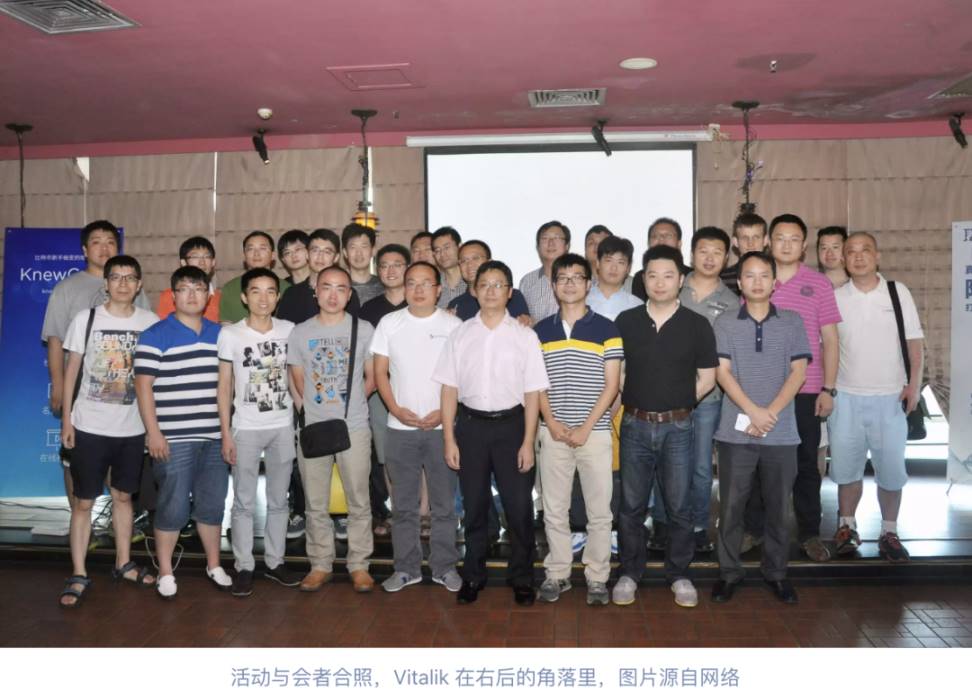
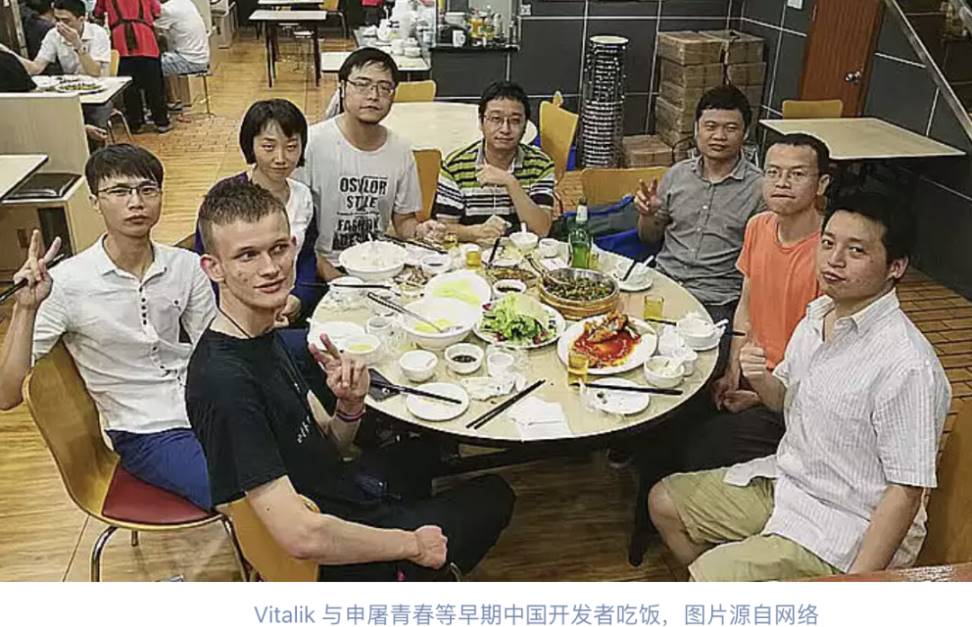
I remember during a sharing session in a café in Hangzhou, the audience's main reaction was that they couldn't understand and didn't know what was being discussed. After touring Hangzhou and Shenzhen, Vitalik's impression was that there didn't seem to be anything particularly interesting in China apart from exchanges and mining.
That was roughly the situation back then. I would like to invite other guests to share their early stories, and we will share more content later.
Ross Zhang: Thank you very much, Crab. Next, I would like to invite Du Yu.
Du Yu: Actually, my entry into the blockchain industry also started with reading the Ethereum white paper. I first lazily read the Chinese version translated by Crab, and then I read the English version.
In 2014, 2015, and 2016, I had a personal view that Ethereum truly brought blockchain into the mainstream. Previously, everyone was talking about Bitcoin, thinking of it as just a simple financial application for payments, like using it as gold. However, the smart contracts on Ethereum allowed more people to see the real effects of blockchain technology and DLT technology.
I have always believed that without Ethereum, there would be no Web3 blockchain ecosystem today. In 2014, we invited Vitalik to a financial forum held in Hainan. One of the most valuable things Wanxiang Lab did from this perspective was that we were the first in Asia and even globally to bring Ethereum into mainstream institutions.
On one hand, we were the first large company to support the Ethereum Foundation, providing $500,000 to Ethereum in 2015 when it was at its most difficult time. Having a traditional Chinese company willing to support Ethereum also brought more confidence to the entire community.
On the other hand, we saw the various possibilities that Ethereum could bring in the future, so we took Vitalik to meet various financial institutions and different government departments in Asia, helping everyone better understand what blockchain is and how it differs from Bitcoin. At that time, when people mentioned blockchain, they first thought of Bitcoin, and more often than not, they associated it with negative information. We hoped to showcase the future application scenarios brought by blockchain technology and smart contract technology through Ethereum's new architecture.
Looking back at everything, we did many interesting things, but at that time, the most important thing, apart from the community knowing and supporting Ethereum, was that we brought Ethereum into the mainstream and into the regulatory perspective.
Looking back, even in mainland China, where blockchain and crypto regulation is the strictest, everyone, whether from regulatory bodies, financial institutions, or enterprises, has maintained a very positive attitude towards Ethereum over the years. This is also one of the most important achievements of the efforts made by everyone present at that time.
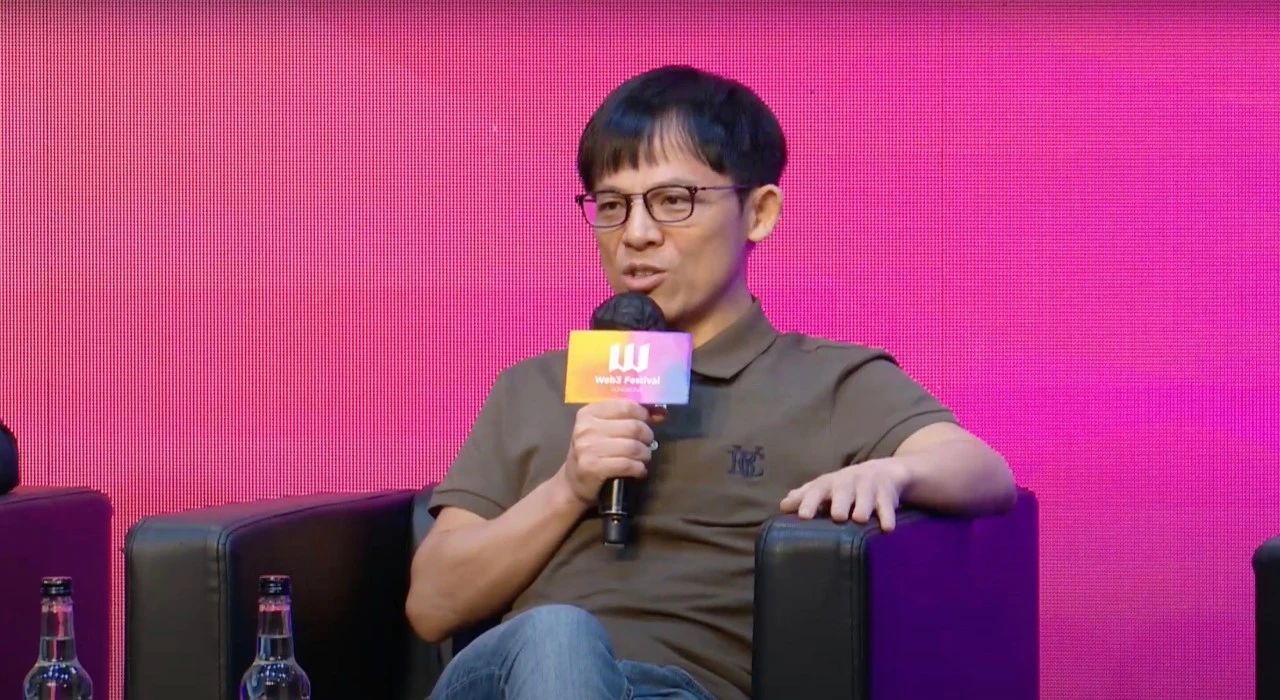
Ben He: I would like to share some interesting memories. I believe there are imToken users present. imToken submitted its first BETA version for iOS on November 11, 2016, and I believe some related users are in the audience.
Earlier, we talked about the white paper. Before I encountered Ethereum, I was working in the IT industry, focusing on technology and product development. I had seen Bitcoin very early on and tried to use the Bitcoin client to receive Bitcoin and experience it, but at that time, I had many misunderstandings and doubts about digital currency and did not deeply engage with it.
It wasn't until 2014 that I saw the Ethereum white paper, which mentioned that through blockchain technology, various decentralized applications could be built on top of smart contracts, like DApps. I was deeply moved by this narrative at that moment.
Looking back, most of the decentralized applications mentioned in the white paper have already been realized, such as tokens. Whether it's ICOs issuing tokens or various projects raising funds and conducting airdrops through tokens, tokens have become an important application, which was validated during the early ICO boom in 2017.
In 2018 and 2019, applications continued to deepen, with DeFi decentralized applications becoming particularly popular. The use cases have been fully validated, including decentralized markets and decentralized storage. The smart contract wallets and AA accounts mentioned earlier were all envisioned in the white paper.
Reflecting on the insights provided by the white paper, the future vision described has all been realized today. imToken designed its product in 2016, and the product design approach was also aimed at fulfilling this vision. During the early entrepreneurial stage, we aimed to integrate technology and products to meet user needs, as depicted in the Ethereum white paper.
Looking back, all these things are happening, and the potential of the Ethereum platform is limitless. Today, we see so many entrepreneurs pouring in, and with policies and capital nurturing this soil, we can confidently witness the explosive growth of the entire blockchain ecosystem.
Ross Zhang: I want to specifically mention that imToken was the first mobile wallet I used. I have been with imToken since its early days, and seeing the product evolve has been quite moving. Next, I would like to invite Roland.
Roland Sun: Let me share some interesting stories from the past. Ethereum was first brought to China by Shen Bo. Back in 2014, Shen Bo told me about Ethereum, but I didn't quite understand what the Ethereum project was about because the concept was just too new.
In the first half of 2015, around February and March, Shen Bo brought Vitalik to meet Xiao Feng. This was their first meeting, and it was quite coincidental. Why did they bring Vitalik to meet Xiao Feng? Although Ethereum didn't exist yet, Xiao Feng had already published profound insights about blockchain in early 2015. At that time, it was hard to imagine that Xiao Feng, who came from a traditional finance background and was not a technical expert, was initially involved in Bitcoin investment and was the founder of Bosera Asset Management.
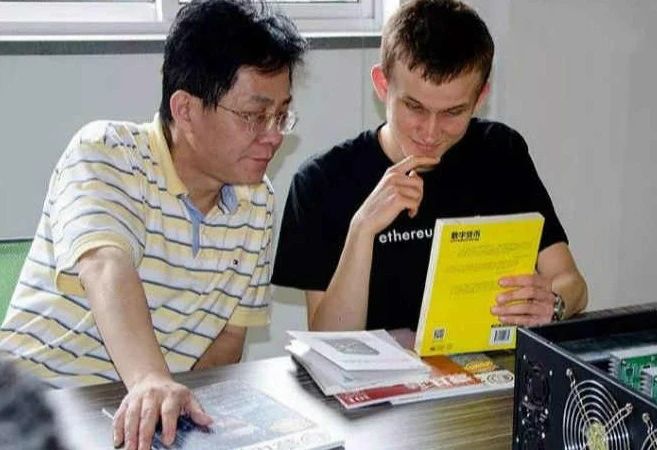
Shen Bo with Vitalik
After reading one of Xiao Feng's articles, Shen Bo found it very impressive and immediately took Vitalik to find various opportunities to meet Xiao Feng. Their first meeting took place at the airport, and the three of them hit it off very well. Later, they began to engage more deeply, including doing at least two significant things in 2015. One was the $500,000 investment in Ethereum by Wanxiang Lab, which solved an important funding issue for Ethereum and addressed an urgent need. I drafted the contract for that.
Additionally, the three of them organized the establishment of Fenbushi Capital, with all three being founding partners. Due to international reasons, Xiao Feng mainly operated domestically, while Shen Bo and Vitalik were primarily overseas, but they essentially used the same brand.
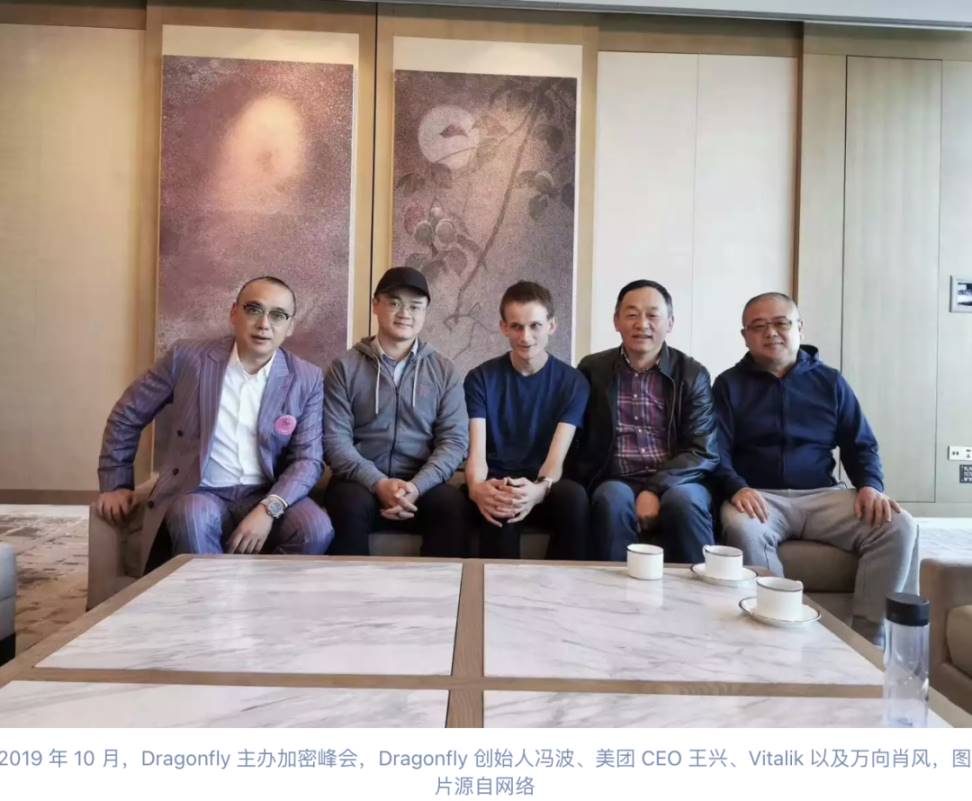
In 2015, Wanxiang organized the first China Blockchain Conference domestically, which has now reached its eighth year. It has been quite a journey, and since then, blockchain has entered the mainstream world in China. Looking back at Ethereum itself, very few people in the world could understand this project in 2015. At that time, Shen Bo was still the CEO of BitShares, and Crab was the person who had the deepest research on BitShares in China.
Internally, we were always discussing these two projects, BitShares and Ethereum. Both projects had revolutionary significance, but from that perspective, the comparison between the two seemed a bit strange. BitShares was designed to bundle blockchain and applications together, and it had already set up a series of applications that were quite innovative, creating the earliest decentralized stablecoins and oracle models, which were very revolutionary.
However, all the apps were developed by the founders themselves, and strictly speaking, their blockchain was not a very open platform but rather served their own apps, leading to a close coupling between the DApps and their blockchain, which was an exclusive relationship, a relatively traditional model.
Ethereum, on the other hand, was completely the opposite. Ethereum itself had no applications; the Ethereum Foundation did not develop any applications but provided the infrastructure. I positioned it as a smart contract platform where all DApps were developed and deployed by third parties without any permission, similar to Android. Google developed the open-source Android operating system but did not develop any apps themselves, allowing all third parties to develop, which was very revolutionary.
From that perspective, BitShares seemed to be moving faster because on the first day of its launch, DApps on BitShares were already deployed and usable. In 2015, I discussed this issue with Shen Bo, as he always wanted to create a decentralized exchange. By 2015, the decentralized exchange on BitShares was already in use. I remember that during BitShares 2.0, the TPS efficiency was quite good, and it was basically usable. In version 1.0, it might have been a bit slower, but in 2015, Ethereum's foundational platform was not particularly well-developed, let alone having various DApps on top of it.
I remember Shen Bo asked Vitalik when there would be a high TPS platform to develop DApps so that he could create a DEX. Vitalik replied that it might take a few years and that he needed to complete sharding because the main solution being considered at that time was sharding. However, state sharding was a massive undertaking. In 2015, Vitalik said it would take 4 to 5 years, but Shen Bo said he couldn't wait that long and needed to operate a decentralized exchange now.
Although Ethereum later chose a solution that was not sharding but relied on Rollup, Vitalik changed his mind several times in between and eventually felt that Rollup was a better solution. Before Rollup took off, DEX technology had already begun, and DeFi, represented by DEXs, had emerged around 2019, aligning perfectly with the prevailing ideas at that time.
Ross Zhang: The stories shared earlier are from Asia. I would like to briefly share from the other side of the world, from the birthplace of Ethereum in Canada.
As you know, Vitalik is Canadian, and Ethereum originated in Toronto, Canada. In 2015, I noticed that people began discussing this. I studied computer science and was relatively sensitive to technology, but at that time, I was already involved in investment at a Canadian pension fund, which gave me a unique experience and two different perspectives.
I saw that there were early supporters of Ethereum in Toronto who organized the earliest Ethereum meetups, including Vitalik, Gavin Wood, Joseph Lubin, Anthony Dilorio, and other co-founders of Ethereum, as well as early community members. There were also Web2 geeks present at those meetups.
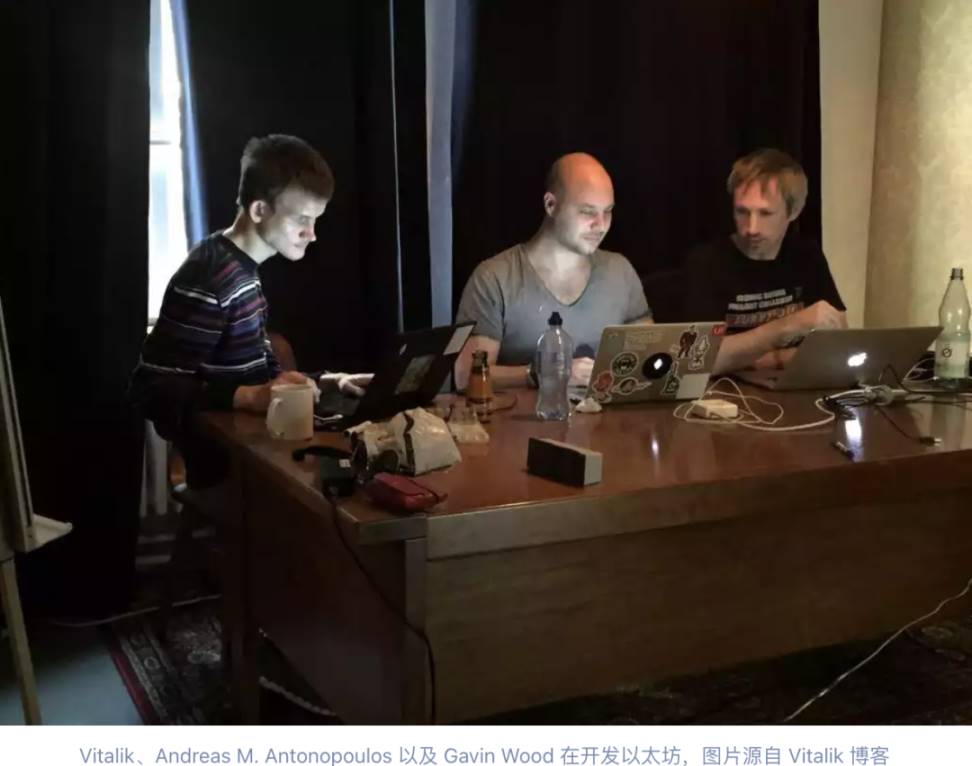
At that time, I didn't quite understand it. From a technical perspective, it still felt very early, both in terms of development and operation, and everyone was wondering whether this could actually succeed.
While I was at the Canadian pension fund, I thought this made a lot of sense because I could see the changes it could bring to the financial world, especially in improving capital efficiency and trust. So, I established a blockchain research group within the pension fund. It started with 10 people, and by the time I left, it had grown to about 100 people.
At that time, we invited Vitalik and Joseph Lubin to explain what smart contracts are, what their uses are, and what Ethereum is. We were among the early ones to pay attention to Ethereum and share early stories from the birthplace of Ethereum in Canada.
As you know, Ethereum completed the Shanghai upgrade on the morning of April 13, Beijing time. Throughout Ethereum's development, what do you think are the important milestones, especially in light of the Shanghai upgrade?
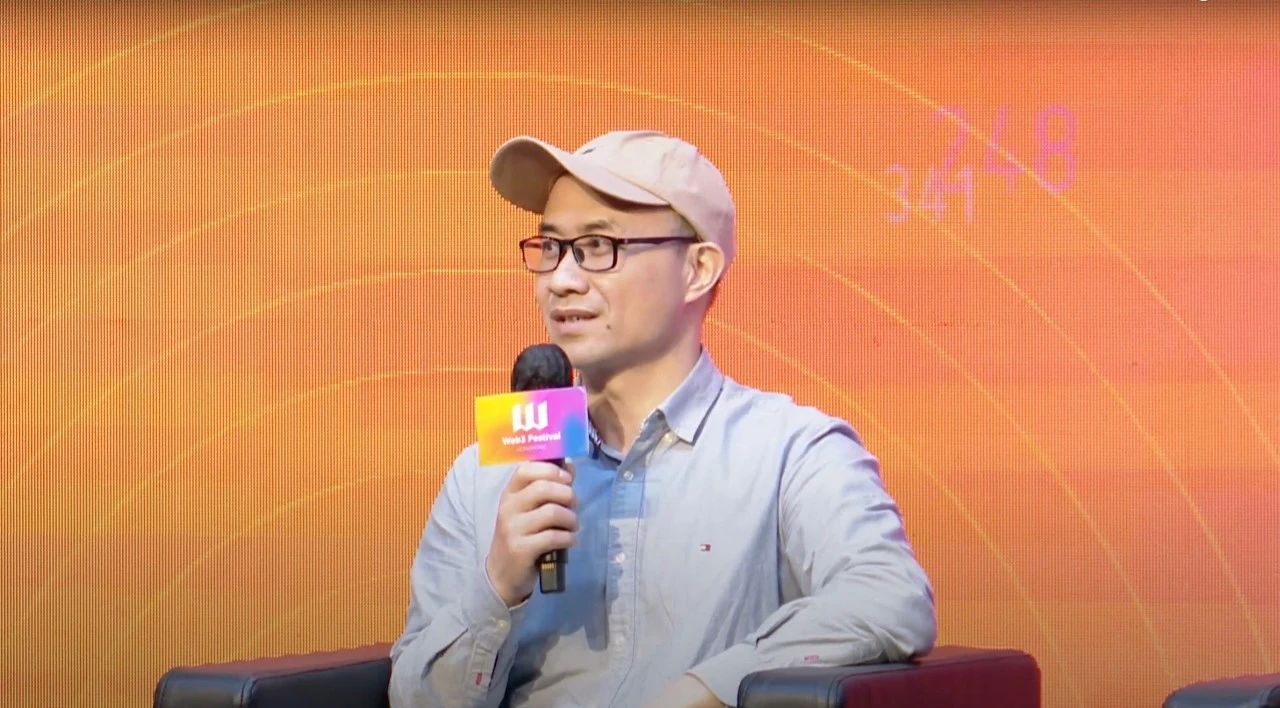
Jerry Liu: When it comes to milestones in Ethereum's development, I can't recall the specific dates, but I can remember a few key nodes.
The first node is the launch of the mainnet, which should be around July 2015. At that time, Gavin Wood created the EVM single-handedly and customized the Ethereum standard. No one expected that the EVM would later become almost the industry standard. What amazed everyone was that smart contracts could actually be realized.
The second node is the ICO boom, where everyone discovered that they could issue assets on Ethereum and raise funds in this way. Many projects emerged at that time, and while many were speculative and part of a bubble, there were indeed many projects focused on long-term innovation in the industry.
The third node is the early practice of NFTs, including the well-known "CryptoKitties" project, which showcased another possibility for assets. Before this, people often traded homogeneous assets, but CryptoKitties allowed everyone to see the potential of non-homogeneous assets, opening a larger window for human finance.
The fourth node is DeFi Summer, where a large number of decentralized finance practices began. Of course, some of these practices, such as farming, now seem unsustainable, but many financial business models have proven to be viable and have been retained, such as collateral lending and decentralized exchanges based on the AMM model, which have become standardized components in the industry.
The journey continues, and I believe that more financial business models will be discovered and sustained, bringing more possibilities to human financial practices.
The fifth node is the Merge. The Merge has been postponed countless times, and I didn't expect it to go so smoothly during the last successful attempt. For many Ethereum fans, a weight has truly been lifted from their hearts, allowing everyone to forget past worries and look further ahead.
The significance of this Shanghai upgrade is that it has improved liquidity and even created a new track for LSD, allowing Ethereum staking and collateral businesses to grow into a sector comparable to Bitcoin mining. This is my basic view.
Ross Zhang: Thank you, Crab. One point that resonated with me is that in the early days, no one anticipated that Ethereum, which started out quite primitive, slow, and rudimentary, would achieve its milestones step by step according to its roadmap. Despite the significant transitions along the way, with tens of millions of dollars in assets running on it, it has managed to do so smoothly, which is the result of the collective efforts of the entire Ethereum community and developers.
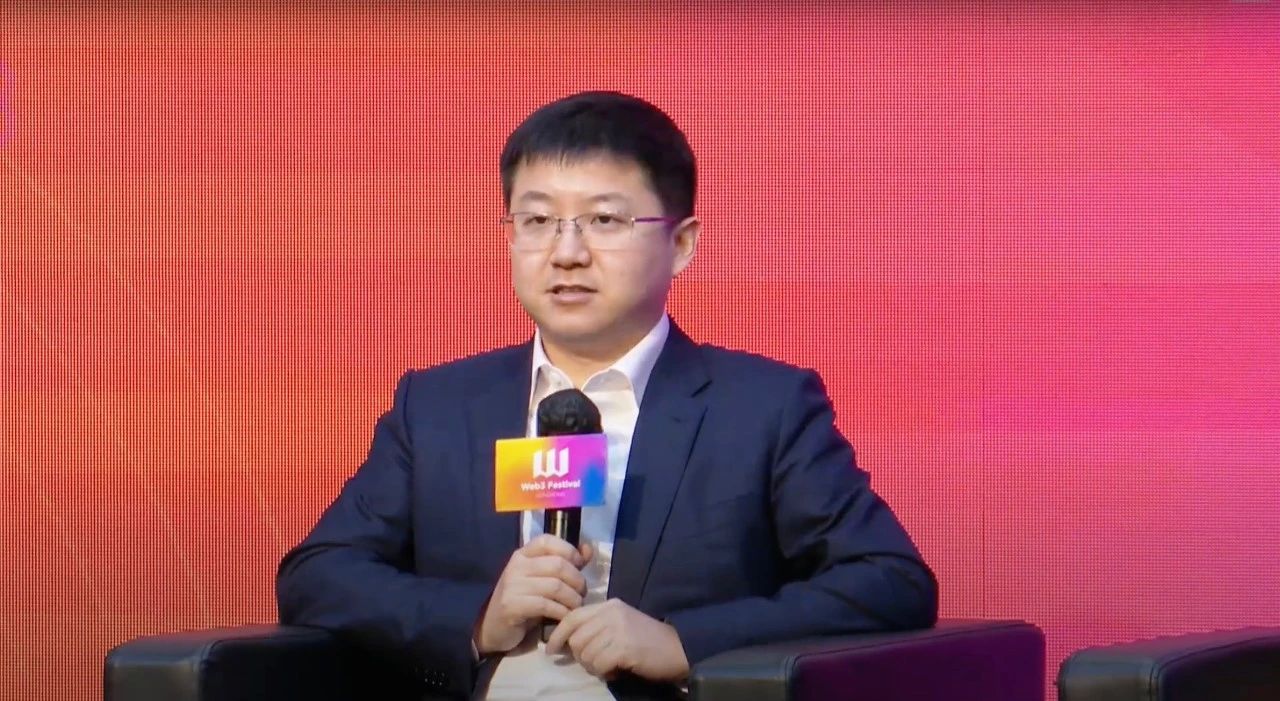
Du Yu: The goal stated in the Ethereum white paper is to "become the world computer," but today, Ethereum is not a world computer; it has become financial infrastructure. Over the years, it has become a crucial financial infrastructure in the Web3 world. From another perspective, the most important milestone is the emergence of various new asset protocols.
From the earliest ERC20, where issuing tokens required setting up a chain and had a high barrier to entry, to ERC20 allowing anyone to issue their own tokens within minutes, and later ERC721 representing more non-standard assets in the world, along with the series of asset protocols extending from 1155, these are the most important infrastructures in the history of Ethereum's development.
Today, Ethereum continues to evolve through different stages. In the past few years, it has focused more on asset protocol infrastructure. In the last couple of years, many financial infrastructure tools have emerged, but there are still issues with performance and cost. Therefore, the current trend has shifted to how to enable Ethereum's various Layer 2 and Layer 3 solutions to support larger-scale applications, with different stages having different focuses and missions.
Ben He: Let me briefly review Ethereum's development roadmap. In the early days of Ethereum, it was clear that four stages were planned. The first stage was the launch of the BETA network in July 2015. On March 14, 2016, the second stage officially launched as the public release version. The third stage saw the explosion of DApp applications and the flourishing development of DeFi.
We are now entering the fourth stage, but in between, Ethereum has undergone many adjustments along two lines. One line is how to transition from PoW consensus to PoS. Last year's Merge confirmed that Ethereum has entered the PoS stage. The Shanghai fork on April 13 allowed everyone to freely withdraw based on staking. This is the evolution of the consensus protocol, from the initial idea of Ethereum, the birth of the white paper, to the entire roadmap, which has remained largely unchanged. The only difference is the long time it has taken, with many delays and the "bomb" being defused multiple times.
The second line revolves around scalability. Initially, there was the state sharding proposal, but later Vitalik mentioned the direction of scaling through Rollup. The first line has achieved a milestone state, with PoS entering a stable state after nearly a year of running. The future development of Ethereum's roadmap will focus on applications, guided by Rollup, as Ethereum moves from the Merge towards The Search, exploring how to create better, low-cost, and stronger scalability for Rollup through protocol upgrades.
For imToken, this is very important because wallet services and applications are crucial for users. Scalability is essential to bring blockchain and Web3 to every household and ordinary people. I am very much looking forward to Ethereum's continued development along its roadmap, achieving low-cost and high-performance scalability to reach the throughput of traditional Web2 internet.
User experience is also important, such as the protocol layer promoting AA abstract accounts, focusing on how to lower the threshold for users and reduce security risks. For the protocol layer to pave the way for the application layer, wallets should actively explore how to lower user thresholds and enhance experiences based on improvements in these protocols, allowing users to feel both secure and at ease while supporting an increasingly rich ecosystem of applications.
Ross Zhang: Thank you, Ben. Ben just mentioned the long-standing term "serenity," which was part of Ethereum's initial white paper planning. Later, discussions evolved into Ethereum 2.0, and now we talk about the new roadmap of Merge, Verge, Purge, and Splurge. We see that the roadmap is becoming more detailed and increasingly adjusted based on technological developments.
Due to time constraints, I have one last question I would like everyone to share. Stepping outside the Ethereum ecosystem, as OGs in the blockchain and crypto industry, what insights do you have to share with everyone? Please keep it brief.
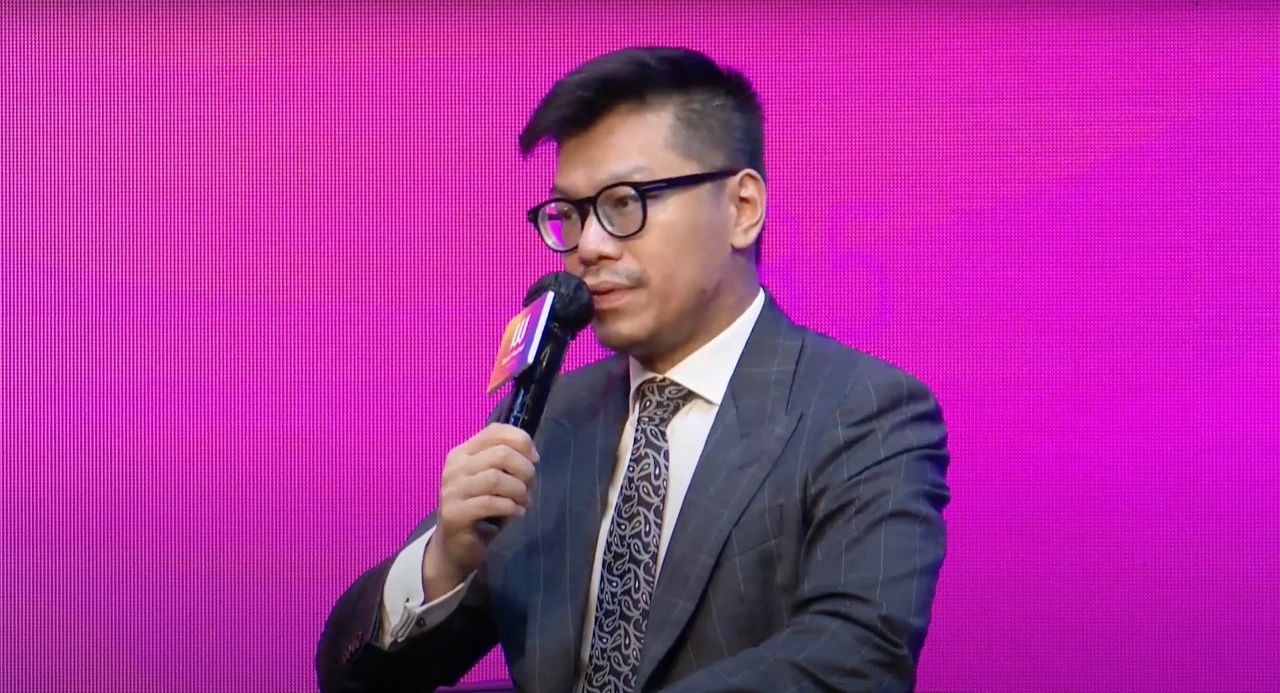
Roland Sun: Personally, I believe that studying blockchain cannot be separated from Ethereum. Ethereum provides the current development paradigm for the blockchain industry, and many other projects are learning from Ethereum to varying degrees. Although they have their own characteristics, under the overall framework, the blockchain industry has not yet surpassed Ethereum to reach the next generation; that has not happened yet, but perhaps it will in the future.
What will be the next step for Ethereum? What will the next developments in blockchain be? I see some potential directions for development. Currently, Ethereum has shifted from its early focus on sharding to promoting Rollup as a more realistic solution, including OP Rollup and ZK Rollup represented by Arbitrum, which may mature in the next year or two. They are inherently efficient, and most DApps are considering deploying on Rollup due to its high efficiency and low costs.
The main issue for Ethereum moving forward is how to resolve the relationship between the main chain and Rollups, specifically who will capture the value. Ethereum may consider this point next. Currently, Rollups essentially pay gas fees to the main chain in a one-time package, saving a lot of gas fees for the DApps themselves, but how to distribute the benefits between the two is a significant issue for the future.
From another dimension, many are also researching the modularity of blockchain. The partner from ConsenSys mentioned the issue of Blockchain and Merge Blockchain, which was initially thought of as another dimension of scalability. This involves outsourcing state matters separately to create a decentralized network, which is also a possibility today, allowing Ethereum's state to be outsourced to create an independent network.
Currently, the business model for Rollup requires codata from the main chain, but Ethereum's gas costs are relatively high. In theory, there will be a separate network dedicated to providing state data requests in the future, as this would lower costs. From another perspective, modularizing blockchain could lead to many future modular solutions, including sorters, which are also important and closely related to MEV.
Additionally, Ethereum has yet to solve the storage problem. Currently, Ethereum does not have a storage network, and all on-chain data is not defined as storage. However, the amount of data in the entire network world far exceeds the hundreds of gigabytes of data on the Ethereum chain, which is not even in the same order of magnitude. Web3 will essentially integrate all internet data in the future, and a decentralized storage network is necessary. It doesn't necessarily have to be built by Ethereum itself, as many decentralized networks already exist.
In the future, how all operational chains and Rollups will call data from decentralized storage networks is also an important topic for consideration, but there are no clear answers yet.
Ben He: As mentioned earlier, from the application layer, users are most concerned about how to use it comfortably and securely. Looking back at the blockchain's "impossible triangle" of Security, Decentralization, and Scalability, Scalability is the issue currently being addressed. As industry builders, users need to be patient. First and foremost, we must ensure security and decentralization, and then work on further breakthroughs in scalability. I hope everyone can be patient; good things will eventually happen.
Du Yu: First, the modularity of Ethereum is particularly good. I originally studied communications, and if you look at the internet protocol stack, it consists of various protocols stacked together. In the future, Ethereum will be like the HTTP and IP protocol stack, where everyone is part of the protocol layer. To some extent, Ethereum will be a crucial infrastructure in the Web3 world, and everyone will interact with Ethereum through various protocols, whether through Layer 2 or various Web3 protocol integrations.
Second, the voices of the developer community and builder community in Asia regarding Web3 and Ethereum are becoming quieter. I hope to attract more good developers into Web3 through events in Hong Kong. China and the United States have the most talented developers in the world, along with a complete talent training and education system. I hope to bring more talented individuals and builders into the Web3 and Ethereum ecosystem, which will accelerate the arrival of a better future.
Jerry Liu: I want to emphasize the impact of blockchain technology on the financial system. Vitalik once wrote an article analyzing the importance of various ecosystems in ETH, several of which are related to the financial system, discussing the general currency ecosystem, stablecoin ecosystem, and DeFi ecosystem.
What is the general ecosystem? It is like gold in the traditional financial world. Over the past six months, the People's Bank of China has been purchasing large amounts of gold. In the current traditional financial world, gold remains a foundational asset in the financial system. In the crypto world, assets like BTC and ETH can also be seen as foundational assets, supporting the structure of crypto finance. Stablecoins can serve as relatively safe assets for the general public, without too many concerns.
Currently, the discussion around stablecoins is still in a relatively early stage because the biggest issue is that the stablecoins being talked about still rely on fiat currencies; they still need to be pegged to the US dollar. In other words, they are closely tied to traditional finance to a large extent.
I believe that in the future, stablecoins that do not rely on fiat currencies will emerge, which will significantly reduce dependence on traditional finance. For example, the US dollar—Americans often say that the dollar is our currency, but that is your problem. I think that perhaps in the crypto world, a stablecoin will be created that does not depend on any specific credit to exert influence. I envision that at that time, the impact of the crypto world and blockchain technology on finance will deepen further.
The development of DeFi is gradually advancing the path of financial disintermediation and self-custody. In the Web3 world, there are many DAO organizations, one of which is a large organization called Bankless Dao, which aims to enable future transactions without relying on banks. I believe this vision should be realized in the future, and blockchain technology will ultimately bring about a world that is freer, more disintermediated, and where individuals are responsible for the security of their own assets.
Ross Zhang: Thank you, Crab. One point he mentioned is the native assets of blockchain, referred to as "ultrasound money" in the Ethereum community. I also agree with what Roland just said; discussions about blockchain cannot be separated from Ethereum. I have personally experienced several cycles: what is separated must come together, and what is together must separate. People see issues with Ethereum, pursue other things to solve problems, and in the end, they may return to Ethereum. This is my biggest takeaway. Due to time constraints, I would like to thank all the OGs for their sharing and everyone for listening today.
免责声明:本文章仅代表作者个人观点,不代表本平台的立场和观点。本文章仅供信息分享,不构成对任何人的任何投资建议。用户与作者之间的任何争议,与本平台无关。如网页中刊载的文章或图片涉及侵权,请提供相关的权利证明和身份证明发送邮件到support@aicoin.com,本平台相关工作人员将会进行核查。




